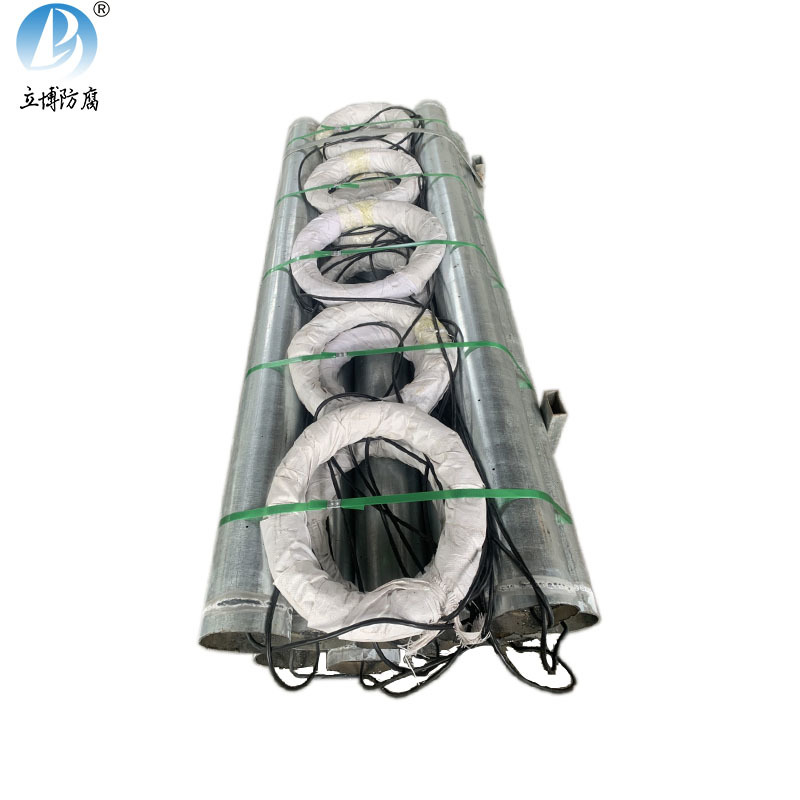Interference of High Voltage Direct Current Transmission Lines
Release time:
2024-11-07
High Voltage Direct Current (HVDC) transmission lines convert the alternating current produced by power plants into direct current.
1. The principle of interference of high voltage direct current transmission line grounding electrodes on pipelines
1. Characteristics of high voltage direct current transmission lines
High voltage direct current (HVDC) transmission lines convert the alternating current produced by power plants into direct current, which is then delivered to consumption areas and converted back into alternating current. High voltage direct current transmission has the following advantages:
(1) When the transmission distance exceeds 600 km, investment is reduced, and the transmission line does not have skin effect or dynamic electromagnetic fields, allowing effective utilization of the conductive area of the transmission line, resulting in low energy consumption.
(2) Easy control, solving the problem of connecting alternating current of different frequencies to the grid without interfering with communication cables.
2. Interference caused by grounding electrode discharge at converter stations
When the high voltage direct current transmission line operates in monopole mode, the current will discharge through the grounding electrodes at the power supply and load ends. If the pipeline is close to the grounding electrode, the current may flow onto or out of the pipeline, causing interference, as shown in Figure 4-20. The interference voltage can reach several hundred volts, so the main safety concern of the interference caused by the monopole operation of the high voltage direct current transmission line is the safety of personnel and equipment, as shown in Figure 4-21.
Interference protection of high voltage direct current transmission line grounding electrodes on pipelines
The interference of high voltage transmission lines on pipelines is mainly manifested in the discharge of grounding electrodes, where the large current can damage personnel and equipment. Protective measures include keeping pipelines as far away from high voltage transmission line grounding electrodes as possible, installing insulated joints densely on the pipeline near the transmission line grounding electrodes, and shortening the length of the pipeline to reduce the pipeline ground voltage. Grounding electrodes should be installed along the pipeline to discharge current unidirectionally from the pipeline. Installing grounding electrodes without unidirectional conduction will introduce a large amount of direct current; although we hope that the introduced current can flow out of the pipeline from the next grounding electrode, in reality, it is unpredictable and uncontrollable where the stray current will discharge. Therefore, the solution is to prevent stray current from flowing into the pipeline. Unidirectional conduction may pose a safety risk of excessive pipeline ground voltage, so management should be strengthened and communication with the power department should be established. Operations on the pipeline should be stopped during monopole discharge, and gravel should be laid on the surface to increase human voltage resistance, enhancing the output capacity of the pipeline cathodic protection station to offset the positive shift in pipeline ground potential caused by stray current discharge.
(1) Increase the reverse conduction voltage of the DC decoupler to eliminate leakage from the DC decoupler, as shown in Figure 4-22.
(2) Replace zinc grounding batteries with spark gaps to eliminate leakage from zinc grounding batteries.
(3) Add grounding electrodes or insulated joints along the line, and the grounding electrodes should only conduct unidirectionally, as shown in Figure 4-24.
In high voltage direct current transmission lines, there is mainly direct current, and there is no dynamic electromagnetic field around the conductors, so no alternating current will be induced in nearby metal pipelines. The interference of harmonics on parallel pipelines is slight and generally does not require discharge. However, the iron towers along the transmission line may cause conductive interference to adjacent pipelines, and lightning or fault currents may damage the pipelines through the grounding of the towers.
If necessary, protective measures can be taken by referring to protective measures for conductive alternating current interference.
Key words:
Learn more about industry dynamics
The company's main products: magnesium alloy sacrificial anode series, aluminum alloy sacrificial anode series, zinc alloy sacrificial anode series, and cathodic protection supporting products, such as more than a dozen varieties and hundreds of specifications.
Focus on the development and production of cathodic protection materials
online message
We will contact you within one working day. Please pay attention to your phone or email.








